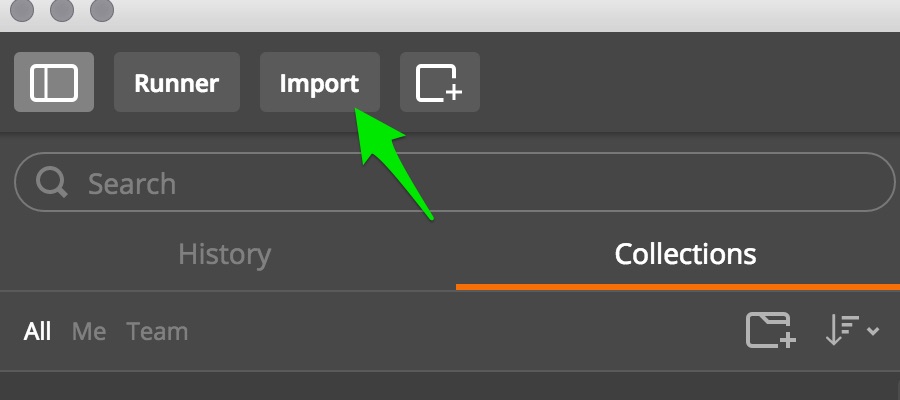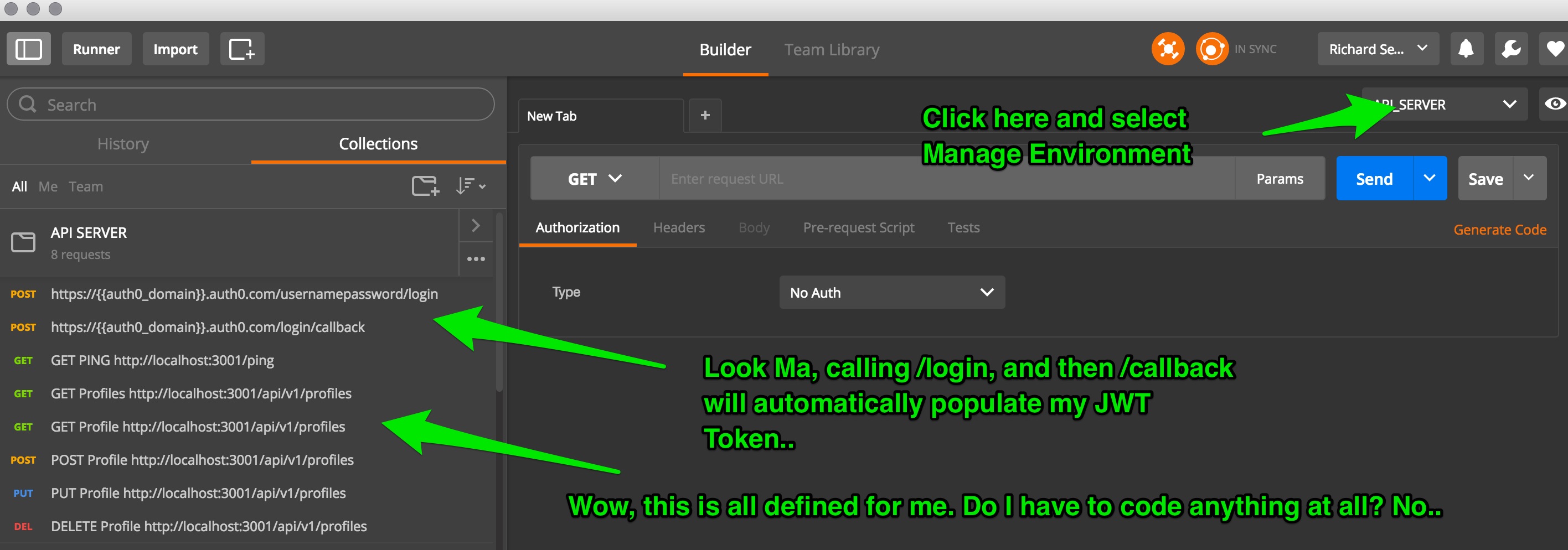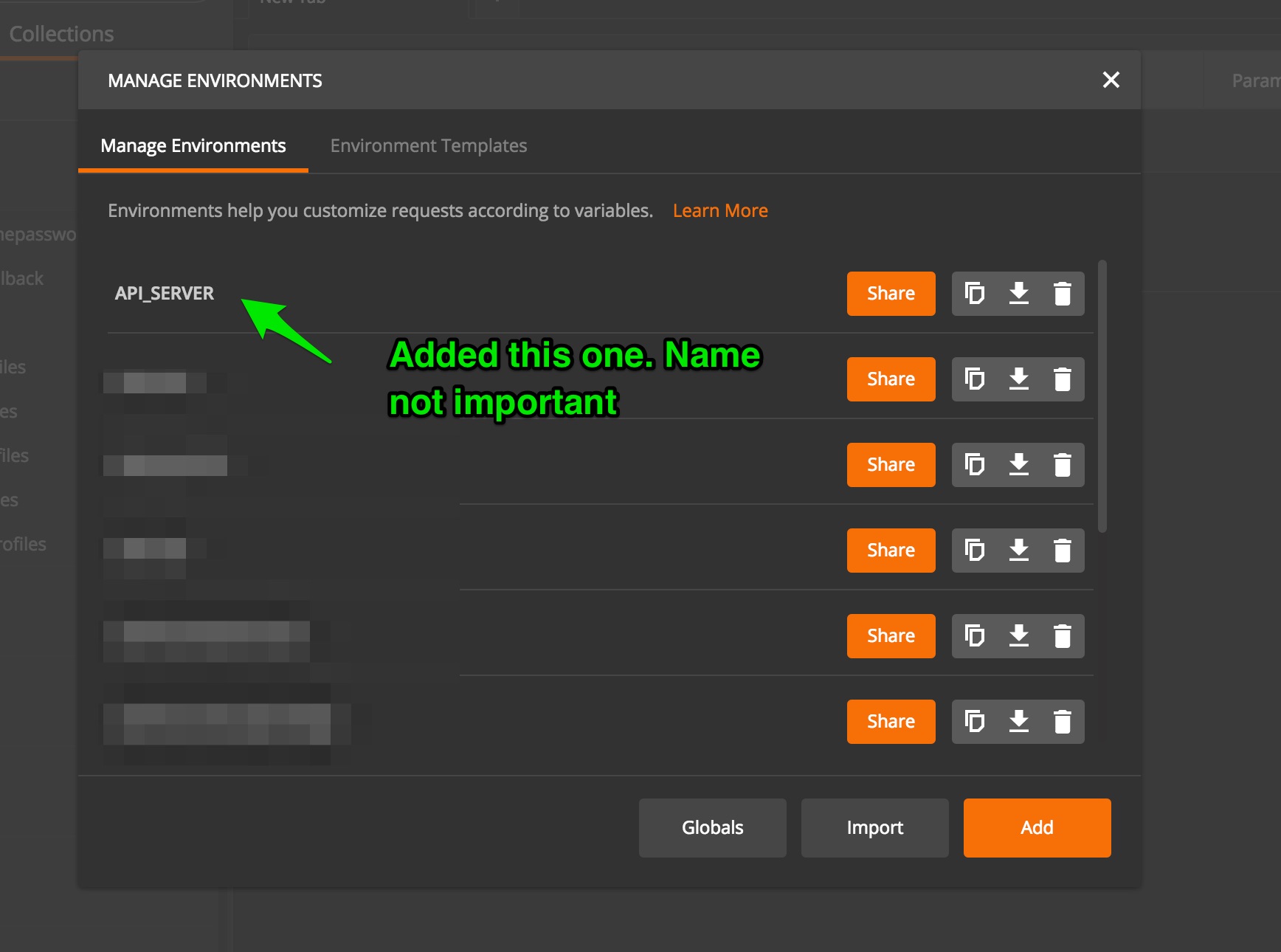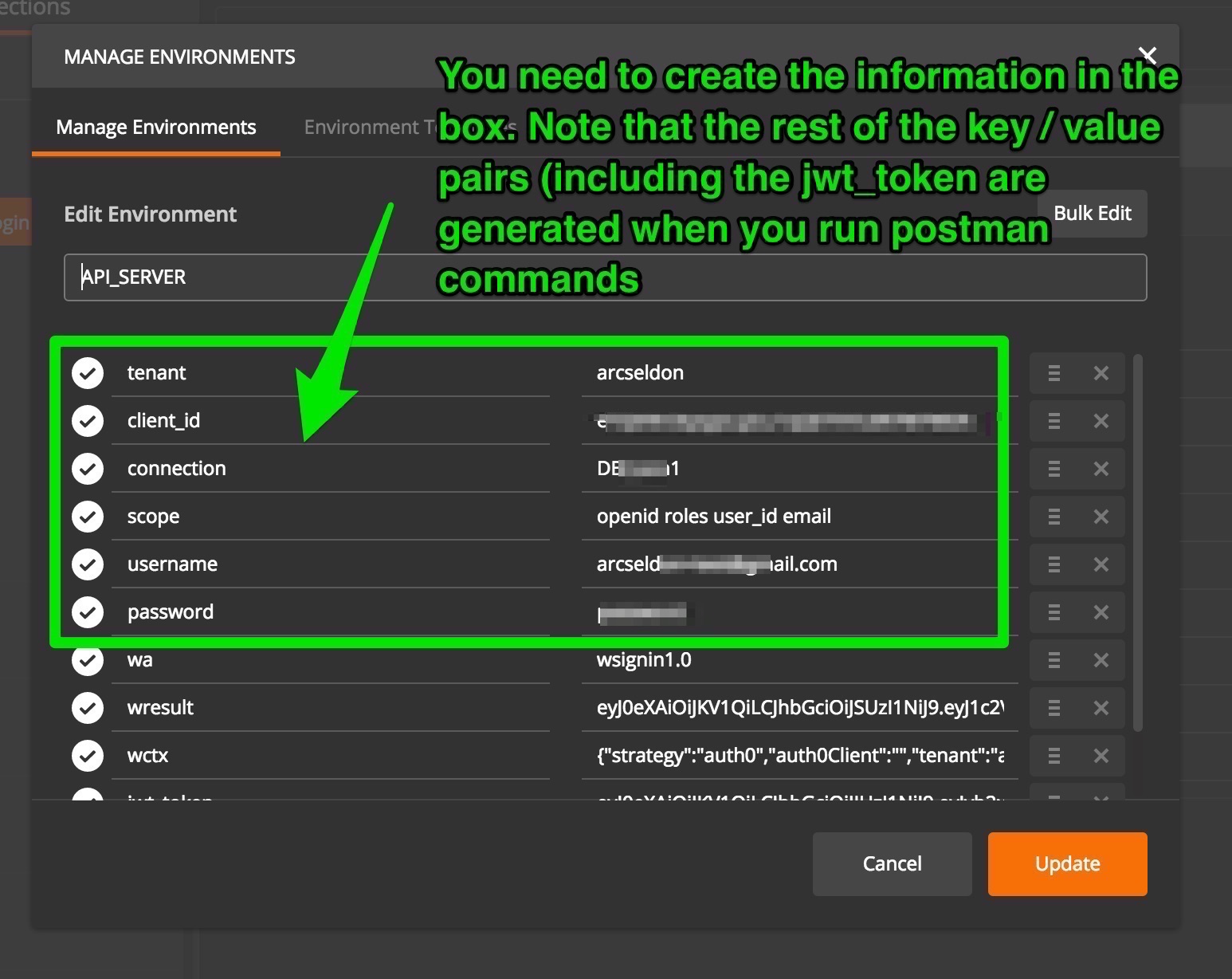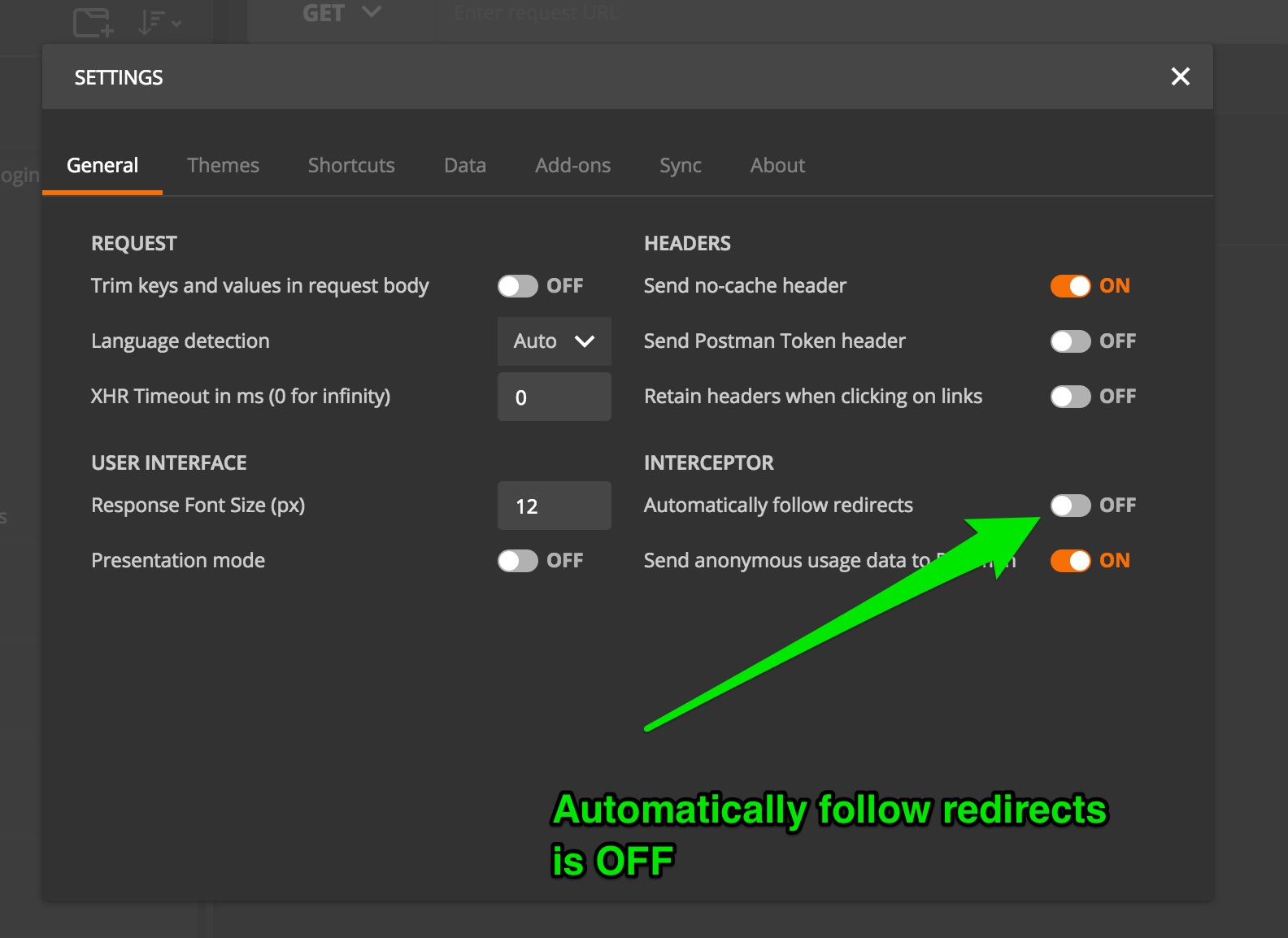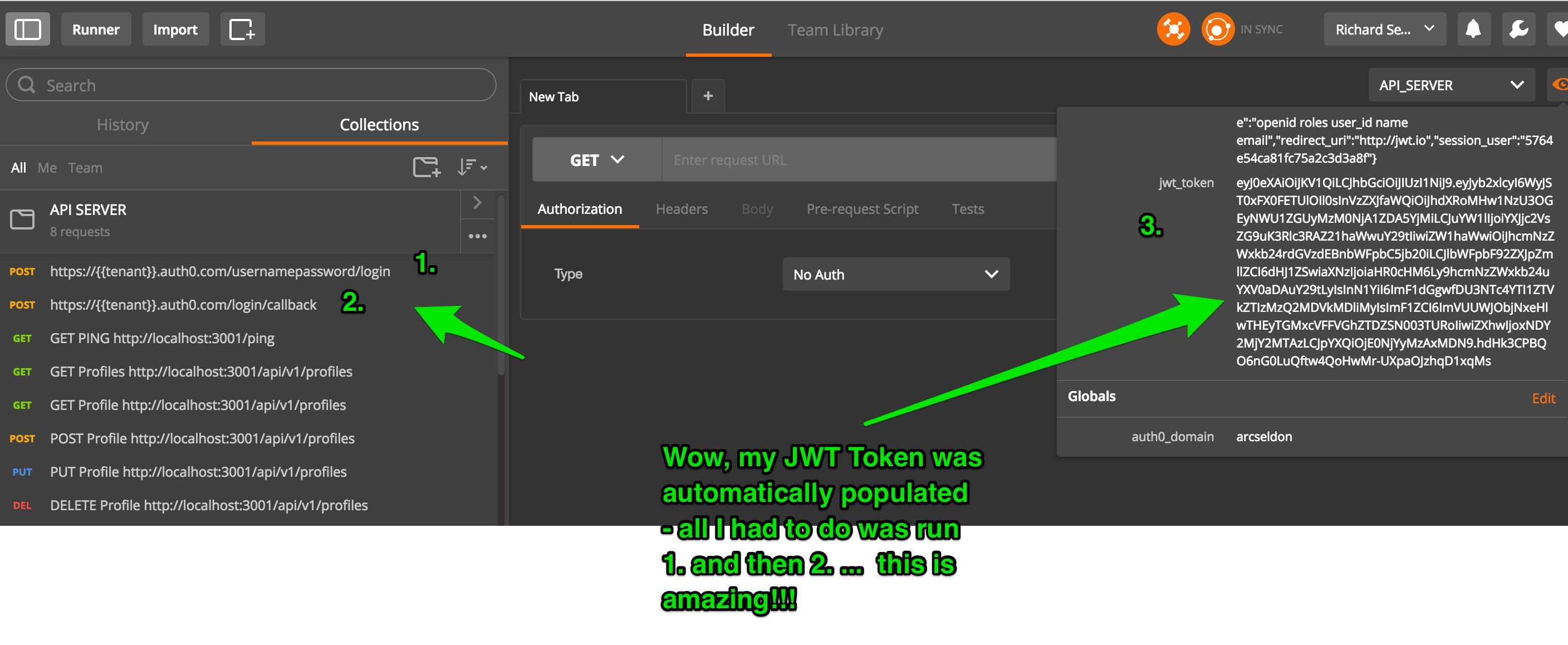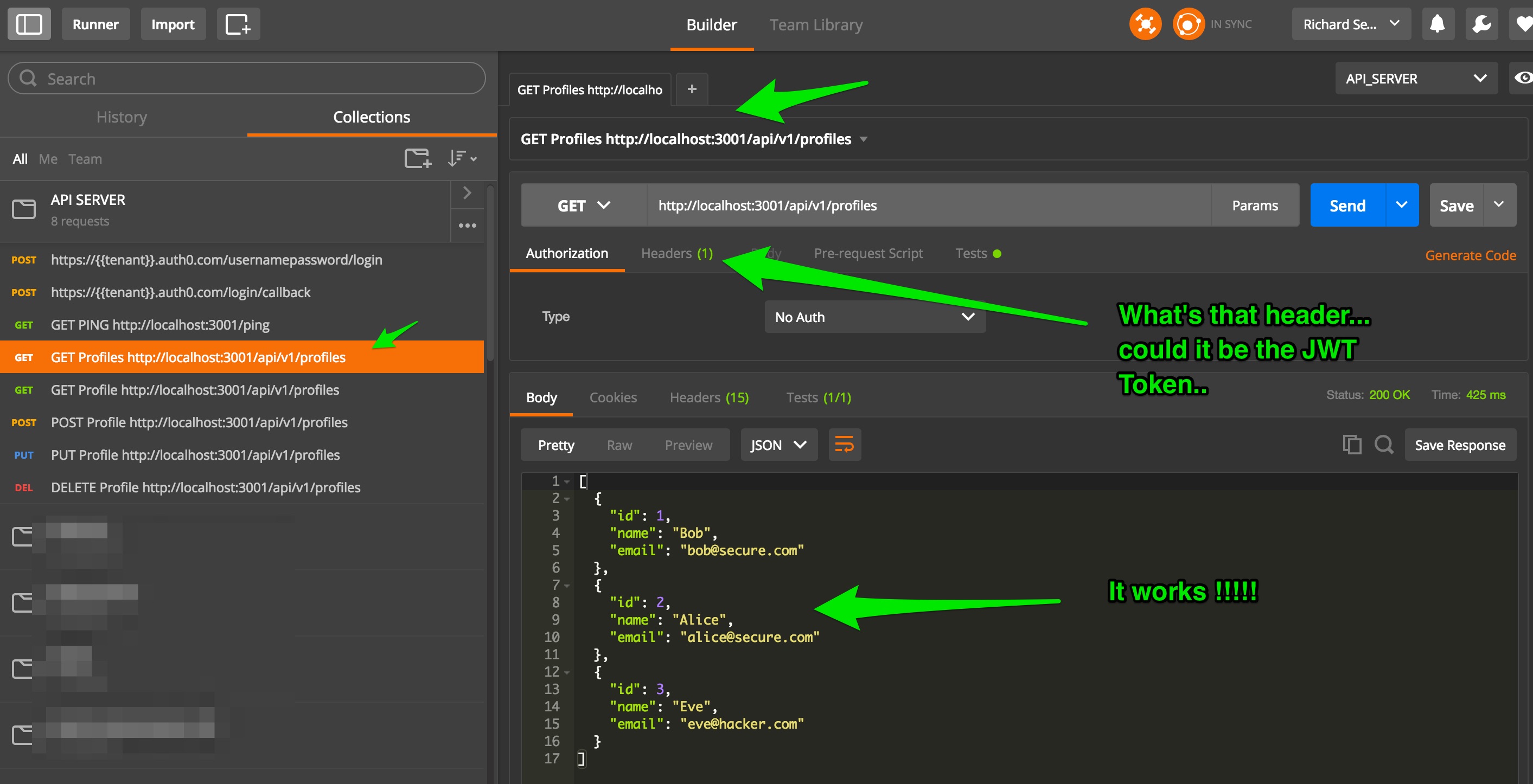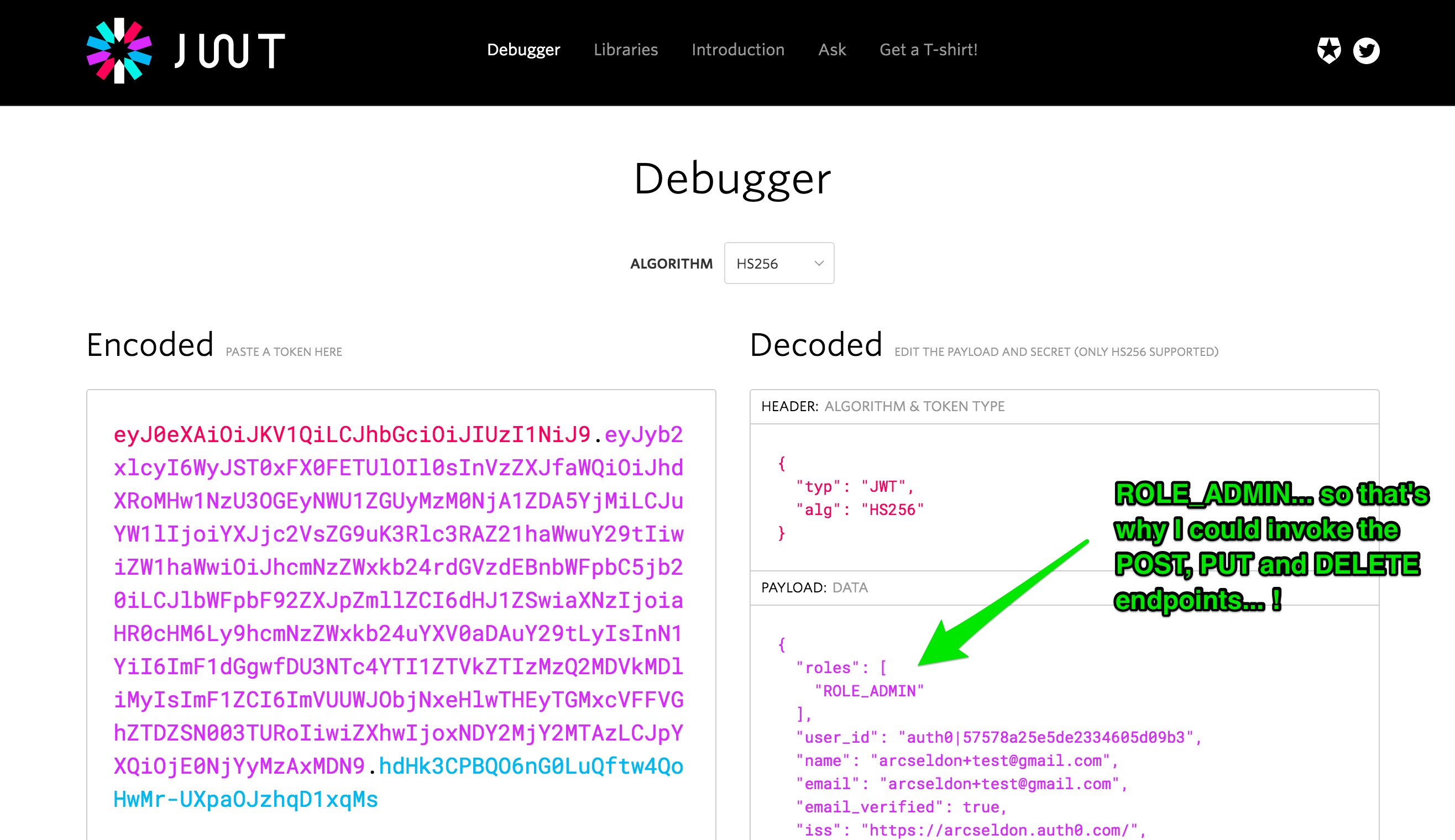This is a companion sample for the Auth0 Spring Security API library. Please refer to that library and documentation for further information specific to the library itself.
Demonstrates using Auth0 with Spring Boot and Spring Security to create a Java Spring API - JWT Token and Role level Authorization
This sample would be suitable for headless APIs and SPA (single page application) backend end server scenarios.
For an example of a SPA application sample (written using AngularJS 1.x), that was written as a companion client GUI sample to this sample, please refer to the Auth0 Spring Security API Client Samples.
This sample application shows you how to:
- Configure and run Java based Spring API server with Auth0 and Spring Security
- 100% Java Configuration (Annotations)
- Secure one or more URL endpoints with Role / Authority based permissions (ROLE_USER, ROLE_ADMIN etc)
- Secure Java Services using method level security annotations for role based access control
- It also shows you how to setup a REST CRUD Controller using Spring Boot! Here we shall perform GET, POST, PUT, and DELETE operations on a Profile domain object
Let's get started - it only takes a few minutes to have a working application with all the above.
This example relies upon Spring Boot.
Benefits of Spring Boot, in particular for traditional server-side web application / microservices architectures:
Automatic configuration - Spring Boot can automatically provide configuration for application functionality common to many Spring applications.
Starter dependencies - Tell Spring Boot what kind of functionality you need, and it will ensure that the libraries needed are added to the build.
Command-line interface - Optional feature of Spring Boot lets you write complete applications with just application code, but no need for a traditional project build.
The Actuator - Gives you insight into what's going on inside of a running Spring Boot application.
Useful quick start reference to getting started with Spring Boot
In order to run this example you will need to have Maven installed. You can install Maven with brew:
brew install mavenCheck that your maven version is 3.0.x or above:
mvn -vCreate an Auth0 Account (if not already done so - free!).
Create an application - for the purposes of this sample - app
Add one or more connections to your application - for instance Google Social Connection,
or username-password DB connection.
Since this sample applies Role based authorization on the Home Page (defaults to requiring ROLE_ADMIN), go to Rules
and create the following new Rule:
function (user, context, callback) {
// ignore this rule if not correct client id of application using Rules
if (context.clientID !== '{{YOUR CLIENT ID}}') {
return callback(null, user, context);
}
user.app_metadata = user.app_metadata || {};
// You can add a Role based on what you want
var addRolesToUser = function(user, cb) {
cb(null, ['ROLE_ADMIN', 'ROLE_USER']);
};
addRolesToUser(user, function(err, roles) {
if (err) {
callback(err);
} else {
user.app_metadata.roles = roles;
auth0.users.updateAppMetadata(user.user_id, user.app_metadata)
.then(function(){
callback(null, user, context);
})
.catch(function(err){
callback(err);
});
}
});
}
In our simple Rule above, we add ROLE_ADMIN and ROLE_USER to any user profiles.
We also only wish to apply this Rule to the Application we are currently using.
You should replace {{YOUR CLIENT ID}} with the client_id of your application - the rule will
then be ignored by any other applications you may have defined.
Our Spring Security Sample app will read this information from the JWT Token and apply the granted authorities when checking authorization access to secured endpoints configured with Role based permissions
Here is our sample AppConfig entry where we specify the endpoints security settings.
@Override
protected void authorizeRequests(final HttpSecurity http) throws Exception {
// include some Spring Boot Actuator endpoints to check metrics
// add others or remove as you choose, this is just a sample config to illustrate
// most specific rules must come - order is important (see Spring Security docs)
http.authorizeRequests()
.antMatchers("/ping", "/pong").permitAll()
.antMatchers(HttpMethod.GET, "/api/v1/profiles").hasAnyAuthority("ROLE_USER", "ROLE_ADMIN")
.antMatchers(HttpMethod.GET, "/api/v1/profiles/**").hasAnyAuthority("ROLE_USER", "ROLE_ADMIN")
.antMatchers(HttpMethod.POST, "/api/v1/profiles/**").hasAnyAuthority("ROLE_ADMIN")
.antMatchers(HttpMethod.PUT, "/api/v1/profiles/**").hasAnyAuthority("ROLE_ADMIN")
.antMatchers(HttpMethod.DELETE, "/api/v1/profiles/**").hasAnyAuthority("ROLE_ADMIN")
.anyRequest().authenticated();
}
Here we are permitting anyone to call our ping endpoint (no JWT required).
We are allowing both ROLE_USER and ROLE_ADMIN to access GET (read) profiles endpoints
We are restricting POST, PUT and DELETE operations to strictly ROLE_ADMIN level role access.
Enter your:
client_id, client_secret, and domain information into src/main/resources/auth0.properties
Note: There is a property in auth0.properties that you do not need to touch. Leave the value as false
auth0.defaultAuth0ApiSecurityEnabled: false - this ensures we do not autowire the default configuration file
provided with the auth0-spring-security-api library itself. That is a default configuration suitable only for
simpler applications with a single secured URL endpoint and acts as a template for actual apps to base their
config from - also used for autowiring dependencies for tests in the library.
For details on the other settings, please check the README for the library this sample depends on Auth0 Spring Security API. In particular, this section on defalut configuration which lists each property together with a description on its purpose.
In order to build and run the project execute:
mvn spring-boot:runTo run a request against the exposed API endpoints, simply make GET or POST requests as follows (using any http client you choose):
Key Point: Remember to include the Authorization: Bearer {{YOUR JWT TOKEN}}" header. You can generate a JWT perhaps easiest by downloading
a web client sample from the Auth0 Dashboard for the same application you defined above, and then by logging using that App and retrieving the
generated JWT token that way.
Make sure that the scope includes the following as a bare minimum: openid roles - without roles your JWT will contain no roles information
regardless of what is associated with the UserProfile itself.
Here is a snippet of code for Lock, roughly how this should look:
var lock = new Auth0Lock('${clientId}', '${domain}');
lock.showSignin({
authParams: {
scope: 'openid roles user_id name email'
},
// ... other params
});
If this is still sounding like a lot of work, read the next section on Postman - this is nearly completely automated for you...
Postman is an incredibly helpful tool for testing HTTP / REST apis. With this sample, there is also a postman collection
postman/api-server.postman_collection.json published in case you use postman for your API testing.
Included is a means for you to generate your own jwt_token directly from Postman. However, there is a tiny amount of setup involved.
Screenshots provided below that explain what to do:
Here, we are supposing you have defined an application in Auth0 dashboard associated
with a DB Connection, and a registered user with a username and password
Notice scope includes roles in its values...
We want to set this up so that when the REDIRECT occurs after authentication but
before any Callback is redirected to, we can pull the id_token value out of the
Location response header. To achieve this we must ensure that POSTMAN automatic
redirects are disabled. To do this, you must have the Postman Interceptor installed
(- I was using Chrome web browser when doing this)
The Interceptor is simply another developer tool. Once installed, just follow the screenshots below and we are ready to go.
Ok, time to finally put all that preparation work to good use.
At this point, execute the /usernamepassword/login command, followed by /login/callback
You now have a brand new JWT Token that will be automatically supplied with each call.
And finally, run one of the endpoints:
Congratulations, you're awesome. :)
Bonus - view JWT Token using https://jwt.io
Go to jwt.io website, and paste your generated JWT Token in the Encoded box.
You should get some good ideas on how it looks:
If you'd rather avoid Postman, and obtain your JWT token another way (perhaps downloading an alternate seed project for the same application and running that, or else generating your own with a JWT SDK library etc), then no probs.
Here are some examples of the available endpoints using CURL from the command line instead. For the secured endpoints, please ensure you replace {{jwt_token}} with your JWT Token value.
curl -X GET -H "Content-Type: application/json" -H "Cache-Control: no-cache" "http://localhost:3001/ping"
curl -X GET -H "Authorization: Bearer {{jwt_token}}" -H "Cache-Control: no-cache" "http://localhost:3001/api/v1/profiles"
or
curl -X GET -H "Authorization: Bearer {{jwt_token}}" -H "Cache-Control: no-cache" "http://localhost:3001/api/v1/profiles/1"
or
curl -X POST -H "Authorization: Bearer {{jwt_token}}" -H "Content-Type: application/json" -H "Cache-Control: no-cache" -d '{
"name": "Chuck",
"email": "chuck@communications.com"
}' "http://localhost:3001/api/v1/profiles"
or
curl -X PUT -H "Authorization: Bearer {{jwt_token}}" -H "Content-Type: application/json" -H "Cache-Control: no-cache" -d '{
"email": "bob@youwerehacked.com"
}' "http://localhost:3001/api/v1/profiles/1"
or
curl -X DELETE -H "Authorization: Bearer {{jwt_token}}" -H "Cache-Control: no-cache" "http://localhost:3001/api/v1/profiles/2"
Auth0 helps you to:
- Add authentication with multiple authentication sources, either social like Google, Facebook, Microsoft Account, LinkedIn, GitHub, Twitter, Box, Salesforce, amont others, or enterprise identity systems like Windows Azure AD, Google Apps, Active Directory, ADFS or any SAML Identity Provider.
- Add authentication through more traditional username/password databases.
- Add support for linking different user accounts with the same user.
- Support for generating signed Json Web Tokens to call your APIs and flow the user identity securely.
- Analytics of how, when and where users are logging in.
- Pull data from other sources and add it to the user profile, through JavaScript rules.
- Go to Auth0 and click Sign Up.
- Use Google, GitHub or Microsoft Account to login.
If you have found a bug or if you have a feature request, please report them at this repository issues section. Please do not report security vulnerabilities on the public GitHub issue tracker. The Responsible Disclosure Program details the procedure for disclosing security issues.
This project is licensed under the MIT license. See the LICENSE file for more info.
